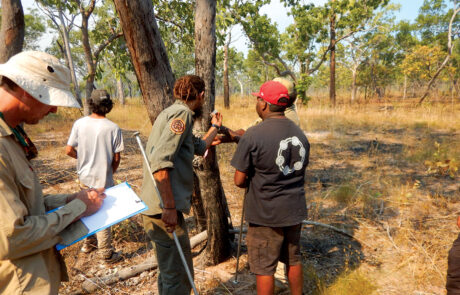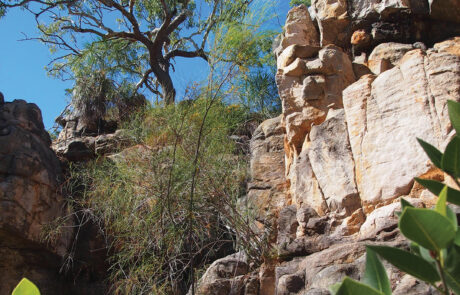The sandstone heath in Arnhem Land’s stone country is a fragile environment that needs sustained attention.
In past decades, the West Arnhem and Kakadu region has been damaged through destructive wildfires, the spread of weeds and the presence of feral animals, particularly buffalo.
Jawoyn Rangers are working with Kakadu National Park rangers, other Indigenous ranger groups and custodians in a long term five-year project designed to address the environmental and cultural damage across the plateau.
The project, which began last year, is overseen by Territory Natural Resource Management and funded through the Federal Government’s Landcare program.
A planning workshop identified priorities for fire management in the stone country, including matching time spent aerial burning with ground burns to target sensitive habitat, to identify priority sites suitable for long-term protection and scientific research, and to build the capacity of traditional owners to conduct fine-scale burning.
In May, the groups came together at a fire management camp at Jeywunaye (Sleizbeck) on the upper Katherine river.
The camp, held from May 13-17, involved more than 40 traditional owners and rangers from Kakadu, Jawoyn and Mangarrayi country as well as scientists and environment managers.
The rangers conducted extensive ground and aerial burning, used the chopper to access remote sites to walk burn lines and used vehicles to improve tracks used for fire management.
There was a sharing ideas between the rangers, traditional owners and scientists around what good fire and healthy heath looks like.
Scientists worked with the group on species composition and monitoring techniques at sandstone heath and existing monitored sites.
During the evening, a ‘show and tell’ was held to share stories and project maps and photos of the day’s activities.



